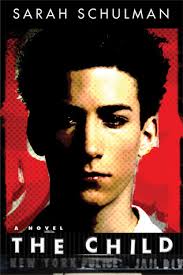 The Child
The Child
by Sarah Schulman
Carroll & Graf. 288 pages, $24.95
SARAH SCHULMAN’S latest novel, The Child, is a complex story about people who are caught in the clutches of our society’s systems. The novel follows the lives of two characters, Eva and Stew, whose lives intersect briefly. The plot is advanced in vignettes. Multiple viewpoints, from secondary as well as primary characters, create a sense of ironic distance as the reader watches powerlessly while the characters are propelled headlong into disaster.
Stew is a lonely, gay fifteen-year-old who hooks up with a couple of older guys via the Internet. We first meet him as he’s visiting the two at their apartment. On his way home, in a restroom at Grand Central Station, he gets arrested by an undercover police officer, who calls his parents. The officer convinces Stew’s parents that he has been sexually molested and then extorts from the boy the names of the men he met on-line. This leads to the arrest of both men and the imprisonment of one, Davie Zieniska. In Stew’s case, the systems in place supposedly to help him—the police, a therapist, the court, and finally his own parents—not only fail him but do real harm. In the ensuing pain and madness, Stew commits an insane murder. The tragedy here is that a single sympathetic ear might have saved a child’s life.
Stewart’s story is a fictional treatment of the case of Sam Manzie, a fifteen-year-old boy from New Jersey who was caught meeting up with men from the Internet and was cast into a paradoxical legal system that considered him a child when he had sex with an older man but an adult when, in a state of confusion and rage, he murdered an eleven-year-old neighborhood boy. Tried as an adult, he was convicted and sentenced to seventy years in prison.
Some may see The Child as Stew’s book. But Schulman doesn’t give us a clear protagonist. She weaves the lives of several characters together and also gives us insight into other events, the ones that didn’t make the headlines. Eva, who believes that “the source of life is having been loved,” is a middle-aged, unemployed lawyer who’s wasting her education in the grungy world of adjunct academia, teaching freshman composition part-time. This job has low pay, no guarantee of future employment, and no benefits. Thus, when she is dealing with the possibility of breast cancer, the nightmare is compounded by the fact that she’s underinsured. The best self-pay insurance she can afford on her own is an HMO that walks her through so many recordings when she calls that it usually takes most of the day to reach a real person. Add to this a doctor who’s professionally a sleaze, a family that has cast her out, and an aspiring playwright-lover named Mary who’s too distracted with her own personal meltdown to lend Eva support.
Ever politically active, Eva “would wish death on opponents while inviting gross, dislocated, poor people home for dinner.” She always seems to be busy helping someone “out of a nightmare of unfairness” despite the fact that she’s failing on her own. Eva encounters Stew because a friend of hers asks if she will help provide a defense for David, the 39-year-old alleged pedophile that Stew met over the Internet. Although she is the defense counsel, she’s the first and only person to point out that if Stew is a child in the eyes of the court as the victim of a pedophile, he shouldn’t be tried as an adult for murder. While Eva’s voice of reason is never heard, she’s a determined woman who refuses to be defeated. To preserve her own family, she supplies us with a somewhat hopeful, albeit surprising, ending.
The Child is a smooth read and a compelling story that works in layers. The title is somewhat of a conundrum. When Eva’s lover Mary’s play is rejected, the only feedback she gets from the reader is the question, “Whose story is this?” In her play, Mary has multiple stories going at the same time. By the same token, the reader might ask, who is the child in the title? While this is a story primarily about adults, children abound: Stew; the nephew he murdered; Eva at different stages of her life; her niece or nephew that she will never see because her family has cast her out. Perhaps the reference is to the gay child in general who comes to realize at a sensitive age that he is the kind of person that all the people he loves hate, the kind that society will reject or at best provide systems that do the least possible good. If there’s a villain in this American tragedy, it is a sickness in our society that enables or promotes homophobia toward its most vulnerable members.
____________________________________________________________________
Martha Miller is an author and a teacher of writing. For more about her, see www.marthamiller.net.





